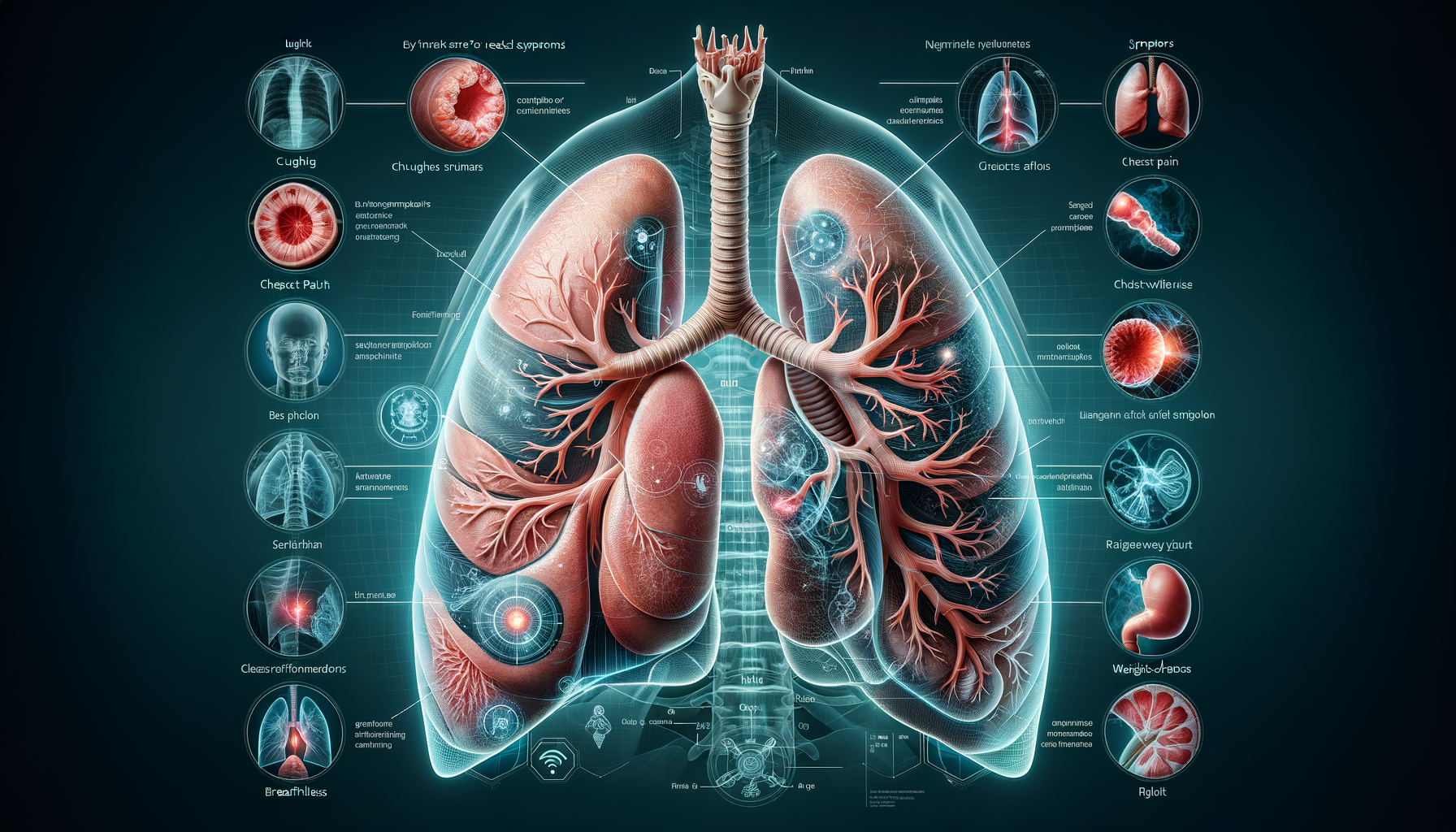Understanding Lung Cancer Symptoms
Lung cancer is a formidable disease, often presenting symptoms that are easily confused with other respiratory conditions. Recognizing these symptoms early can be crucial for effective treatment. Common symptoms include a persistent cough that doesn’t go away, coughing up blood, and chest pain that worsens with deep breathing, coughing, or laughing. Other symptoms might be less obvious, such as unexplained weight loss, fatigue, and recurring infections like bronchitis or pneumonia.
While these symptoms can be associated with other illnesses, their persistence or combination should prompt a visit to a healthcare professional. The challenge lies in the fact that early-stage lung cancer often goes unnoticed because symptoms are either mild or non-existent. This underscores the importance of awareness and regular health check-ups, especially for individuals at higher risk due to smoking or exposure to harmful substances.
It’s vital to consider the nuances in symptom presentation. For example, a smoker might dismiss a chronic cough as a common smoker’s cough, delaying a critical diagnosis. Therefore, understanding these symptoms in context can aid in early detection and treatment, potentially improving outcomes.
Early Warning Signs of Lung Cancer
Early warning signs of lung cancer are often subtle and can be easily overlooked. However, being vigilant about these signs can make a significant difference. Among the early indicators are persistent hoarseness, changes in the voice, and a constant feeling of breathlessness. These symptoms might not seem alarming initially but can be critical clues.
Another early warning sign is the swelling of the face and neck, which occurs when a tumor presses against a large vein. Additionally, unexplained bone pain or tenderness could indicate that cancer has spread to the bones, although this is more common in later stages.
It’s important to note that not all individuals will experience these symptoms, and their presence does not necessarily mean lung cancer. However, being informed and proactive about these signs can lead to earlier diagnosis and treatment, which is crucial for better prognosis.
Methods of Lung Cancer Detection
Detecting lung cancer early can significantly improve treatment outcomes. There are several methods used for detection, each with its own advantages. A common method is a chest X-ray, which can reveal tumors or abnormal fluid in the lungs. However, it may not detect smaller tumors.
For more detailed imaging, a CT scan is often employed. This method provides a more comprehensive view of the lungs and can detect smaller lesions that an X-ray might miss. Additionally, a PET scan can help identify cancerous cells by highlighting areas of high metabolic activity.
In some cases, a biopsy may be necessary to confirm a diagnosis. This involves taking a small sample of lung tissue to be examined under a microscope. While more invasive, it provides definitive confirmation of cancer.
Regular screenings, especially for high-risk individuals, are crucial. These methods, combined with awareness of symptoms, can lead to early detection and improved treatment options.
Risk Factors and Prevention
Understanding the risk factors for lung cancer is key to prevention. The most significant risk factor is smoking, which is responsible for the majority of lung cancer cases. Quitting smoking can drastically reduce the risk, even for long-term smokers. Exposure to secondhand smoke is also a considerable risk factor.
Other risk factors include exposure to radon gas, asbestos, and other carcinogens, often in occupational settings. Genetic factors can also play a role, although they are less significant compared to environmental factors.
Preventive measures include avoiding smoking, testing homes for radon, and wearing protective gear when exposed to hazardous materials. Regular medical check-ups and screenings for those at high risk can also aid in early detection and prevention.
Conclusion: Taking Action Against Lung Cancer
Lung cancer remains a significant health challenge, but early detection and awareness of symptoms can lead to better outcomes. By understanding the symptoms, recognizing early warning signs, and utilizing available detection methods, individuals can take proactive steps in managing their health.
Preventive measures, such as quitting smoking and reducing exposure to known carcinogens, are vital. Regular screenings and consultations with healthcare professionals can further aid in early detection and treatment.
Ultimately, staying informed and vigilant is key. Empowering oneself with knowledge and taking decisive action can make a profound difference in the fight against lung cancer.




Leave a Reply